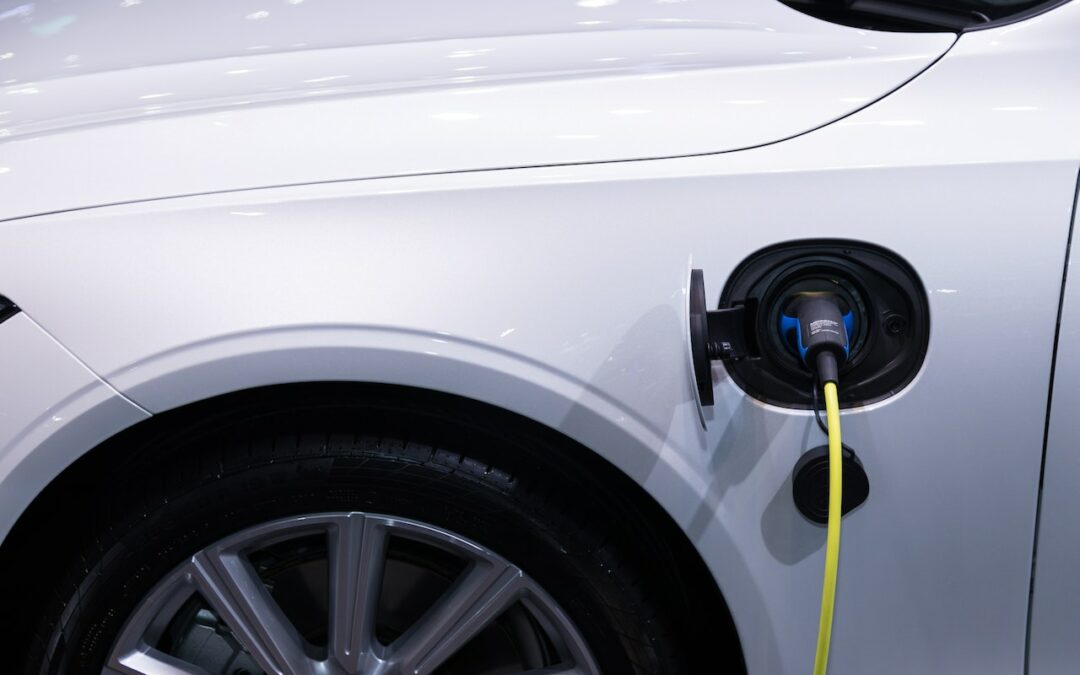
by Komoneed | Sep 2, 2024
An upcoming multi-residential project in St Kilda is aiming to become one of Melbourne’s most sustainable buildings.
Gamuda Land’s $90 million Fareham development, designed by architecture firm BayleyWard, is focused on achieving net zero in operations and a minimum 8-star average NatHERS rating. The building will be powered by an embedded network that provides 100% renewable energy, including rooftop solar photovoltaic panels.
The 73 residences in the 16-level building will feature a mix of water-efficient WEL-rated fixtures and fittings, including dishwashers and taps. Residents will also be encouraged to use greener forms of transport through facilities such as EV charging capabilities, secure bike parks and an onsite bicycle workshop.
In order to minimise the carbon footprint of the construction, Gamuda Land chose family-owned firm Markscon to implement sustainable construction techniques throughout the build.
Artist’s impression of Fareham. Image credit: Studio Piper.
This includes incorporating passive design principles, using green concrete technology where possible and prefabricating concrete elements offsite to reduce the amount of new materials used. During the build, there will be an attempt to utilise recycled materials or locally manufactured products where possible, as well as paints with low to zero volatile organic compounds (VOCs).
Markscon will aim to divert 90% of its waste from landfill by sorting materials for recycling.
Gamuda Land General Manager Jarrod Tai said the company’s mission has always been to work with nature, preserve what was there before and find innovative ways to incorporate it into Gamuda Land’s design.
“In 2021, Gamuda Land unveiled the Gamuda Green Plan — a commitment to sustainable construction and development, with specific steps to reduce corporate greenhouse gases emission intensity by 30% in 2025 and by 45% in 2030,” Tai said.
“We are bringing this same commitment to our Melbourne projects and believe Fareham will help set the standard with its target of 8-star NatHERS and its goal of being net zero in operation.”
Fareham is currently under construction and is due for completion in 2026.
Top image caption: Artist’s impression of Fareham. Image credit: Studio Piper.

by Komoneed | Sep 2, 2024
July 2024 Newsletter Recap: Climate Resilience
jschoshinski
Fri, 08/30/2024 – 15:03
Did you miss the Climatelinks July newsletter? We’ve got you covered. Please find a recap of the July ‘Climate Resilience’ theme below. You won’t want to miss this short list of top resources and blogs from the month. Subscribe to our newsletter today. Do you want to contribute to the Climatelinks community? Send us a resource, blog, or event.
Climate resilience can be generally defined as the capacity of a system to maintain function in the face of stresses imposed by climate change and to adapt the system to be better prepared for future climate impacts. One of the high-level goals in USAID’s 2022-2030 Climate Strategy is to improve the climate resilience of 500 million people.
Fresh Blog Posts
How USAID Supports and Scales Climate Resilience
USAID’s 2022-2030 Climate Strategy aims to support and scale the climate resilience of people, places, ecosystems, and livelihoods vulnerable to the impacts of climate change. The Agency is expanding access to climate information in decision making, increasing the climate resilience of key development sectors and services, and mainstreaming adaptation in plans and programs. It also employs nature-based solutions and engages the private sector in support of sustainable adaptation, including by mobilizing adaptation finance.
Grassroots Project Jumpstarts Conservation Efforts in Mexican Countryside
Water scarcity and a hotter, drier climate were degrading the quality of life of residents in the small town of El Carrizal, Queretaro, Mexico. To address this, the town received a Peace Corps Small Project Assistance grant funded by USAID/Mexico to employ eco-techniques and technologies to advance environmentally conscious best practices and build climate resilience. The project constructed three rainwater collection cisterns, installed 10 solar hot water heaters, built two dry composting toilets, and created educational ecotourism signs.
USAID’s Climate Strategy in Action: Cultivating Climate Resilience through Sustainable Ube Farming
In Palawan, Philippines, smallholder farmers face challenges to their livelihoods from the harsh realities of a changing climate. USAID’s Safe Water Activity is working to improve water security in water-stressed communities and support sustainable livelihood sources like ube farming. These efforts help both communities and the ecosystem become more resilient to climate change.
Bridging the Gap with Parametric Insurance: A Path to Resilience in Developing Countries
With climate-related shocks and stresses increasing globally, economic losses due to natural hazards could skyrocket without efforts to invest in adaptation and build climate resilience. One potential solution is parametric insurance, which pays policyholders a predetermined amount based on the occurrence of a specific “trigger” event, like flooding or extreme heat. This allows the claims process to move faster and makes it less costly to manage.
Connecting Indonesia’s First Large-Scale Floating Solar Plant to the Power Grid
The floating solar plant on the Citarum River in Indonesia is the largest floating solar plant in Southeast Asia and the third largest in the world. The USAID Sustainable Energy for Indonesia’s Advancing Resilience project helped integrate the plant into the country’s grid, allowing it to power 50,000 homes with clean energy. It is expected to reduce 3.1 million tons of carbon dioxide equivalent through 2035, which is comparable to preventing 3.4 billion pounds of coal from being burned.
Empowering Communities: Climate Resilience Through Locally Led Adaptation
In the face of the climate crisis, local people and communities have emerged as frontline responders, both experiencing and addressing climate impacts. Locally Led Adaptation is an approach that supports local people, institutions, and networks to lead decisions on how, when, and where to adapt to the impacts of climate change. The USAID Climate Adaptation Support Activity has developed two new resources to help USAID and its partners further Locally Led Adaptation in practice.
New Resources
2024 GCC Standard Indicator Handbook
The 2024 Climate Change Standard Indicator Handbook has the latest USAID and Department of State standard indicators for climate change and development. It includes definition sheets that outline each indicator’s linkage to a long-term outcome or impact and includes the proper unit of measure.
An Introduction to Assessing Climate Resilience in Smallholder Supply Chains
This resource, designed for medium- to high-level decision makers in food and beverage companies, offers a working definition of climate resilience, an actionable process guide, and sample indicator framework for diagnosing climate resilience in smallholder crop-focused supply chains. Ultimately, this guidance can help companies translate climate risk intelligence into practical, operational strategies to build supply chain resilience.
Climate Adaptation Learning Activity Fiscal Year 2024 Semi-Annual Report
The Climate Adaptation Knowledge and Learning Activity (CALA) works to improve the quality and effectiveness of climate adaptation efforts implemented by partners of USAID’s Bureau for Humanitarian Assistance. It does this by supporting the dissemination of learning and evidence related to climate adaptation programming. This Year 2 Semi-Annual Report provides a synopsis of progress made by the CALA Associate Award between October 1, 2023 and March 31, 2024, and offers a description of activities planned for the upcoming reporting period (April 1, 2024 – September 30, 2024).
Climate Risk Management Spotlight
Regional, Sector, and Country Risk Profiles and Greenhouse Gas Emissions Fact Sheets
Climate risk profiles (CRPs) summarize the key climate stressors and risks most relevant to a Mission’s objectives. These profiles can help promote climate resilience, which is imperative in addressing the multifaceted challenges posed by climate change. Check out the recently added Resilience and Food Security CRPs from USAID’s Bureau for Humanitarian Assistance.
Call for Content
Share your events and resources or write a blog related to an upcoming monthly theme! Check out our upcoming themes to see if your climate work aligns:
September and October: Just Energy Transition
November: COP29
2024 Cross-cutting Themes: Systems Change and Locally Led Development
If your USAID-related climate change work relates to these themes, Climatelinks would love to feature your work and share your resources. Send us a resource or blog.
Teaser Text
Did you miss the Climatelinks July newsletter? Here’s a short list of top resources and blogs from the month.
Publish Date
Thu, 08/29/2024 – 12:00
Author(s)
Climatelinks
Hero Image
IMG_0699 – Sherry Stout.jpg
Blog Type
Newsletter Recap
Strategic Objective
Adaptation
Integration
Mitigation
Region
Global
Topic
Adaptation
Climate-Resilient Agriculture
Climate Risk Management
Climate Strategy
Clean or Renewable Energy
Gender and Social Inclusion
Insurance
Locally-Led Development
Monitoring, Evaluation, and Learning
Nature-based Solutions
Resilience
Country
Mexico
Indonesia
Philippines
Sectors
Adaptation
Show Download Link
On

by Komoneed | Sep 2, 2024
This post was originally published on The Art NewspaperThe São Paulo art fair’s third edition adds a new section for monumental works while staying relentlessly focused on the national...

by Komoneed | Sep 2, 2024
Nissan’s Qashqai once ruled the crossover kingdom, but lost its crown to rivals such as the Kia Sportage. Can the new version regain the throne?

by Komoneed | Sep 2, 2024
Closing major assets like power stations or mines can profoundly impact local communities, sometimes leading to job losses, a decline in local services, and a drastic reduction in population. In today’s world, there’s a clear expectation that mining and utility companies navigate these transitions thoughtfully. This requires developing a comprehensive stakeholder consultation and communication engagement plan, one that communicates a responsible transition and explores a wide variety of options to support impacted stakeholders. The industry is seeing a growing focus on ensuring that external stakeholders are included more as part of this process to consider the community and socio-economic impact of decisions made. By involving the right people and resources, we can better support communities through these challenging changes, minimising any negative impacts and paving the way for a more sustainable future.
What does a sustainable and equitable asset transition look like?
Australia has robust environmental standards for asset closure, requiring thorough land assessments and remediation to make sure the land is safe, stable and non-polluting. In many cases, carbon and biodiversity offsetting is employed as part of the transition. However, there is room for improvement in integrating economic, social, and intergenerational equity into these transitions.
Traditionally, land reuse options — like reforesting, turning land into grazing areas, or creating water reserves — can take 20 to 30 years to develop. These approaches often fail to generate the economic activity needed to replace the jobs lost when a major asset like a power station or mine closes. The result can be “ghost towns” where there are few opportunities for those left behind.
Arguably, in some regions, the voices of traditional landowners are not adequately sought or captured prior to asset planning and transition. Without legislative requirements and strong company values and strategies to support positive indigenous outcomes to enforce such practices, some companies can still avoid engagement with these groups when defining what success looks like for the transition of an asset. This kind of oversight risks undermining the cultural and social fabric of the community and overlooks the opportunity to co-create more inclusive and sustainable solutions that are respectful of cultural heritage.
For asset transition to leave a better, more inclusive legacy, we need to involve all stakeholders, including traditional landowners, and create economic opportunities that align with the community’s needs, values and aspirations. It means thinking beyond short-term fixes and working towards solutions that offer long-term benefits for generations now and into the future.
What are our options?
Land capability or suitability assessment is a critical step in determining the future of sites undergoing transition. In Australia, the process involves more than just deciding what to do with the land. It’s about navigating complex zoning constraints, environmental considerations, and community, business and socio-economic needs to find the best possible future use.
Many companies are open to a variety of ideas for repurposing land, from creating parks and hotels to developing spas and recreational areas. The reality is that many sites, particularly those associated with industrial activities, like coal-fired power stations, face a range of limitations that may present barriers to land uses more sensitive in nature.
As an example, land contaminated by metals, hydrocarbons and other containments and remediation requirements often restricts a transition to light industrial use, making more ambitious and sensitive land use projects difficult to realise. On the other hand, large areas of former mining sites can be better suited to agricultural reuse, depending on limitations associated with steep slopes and available remediation options.
Another key factor to consider is the financial viability of either retaining ownership or selling the land. The land rehabilitation process required to make a site suitable for a new purpose can be costly. Most companies will naturally lean towards options that offer the highest returns with the most cost-efficient rehabilitation and least long-term liabilities. This financial bias can sometimes limit the scope of creative or community-focussed land reuse projects.
Asset transition also offers the opportunity to embrace the principles of a circular economy. Companies can repurpose materials from existing property, plant and equipment for new developments on the land, reducing waste and potentially lowering costs. Taking this approach supports sustainability goals while also adding in a layer of innovation to the asset transition process.
Who do we need to involve?
Involving the right stakeholders is crucial for asset transitions to be sustainable and equitable, starting with local communities and governments. Communities are looking to companies for guidance on potential land uses for transitioning assets and are eager to share their own insights about what will work best for them. A collaborative approach means the transition will align with the needs and aspirations of those directly impacted.
State governments and local councils play a significant role in shaping the outcomes of asset transitions. They have the power to influence regional planning, making sure considerations like housing affordability, transport and job creation are factored into the decision-making process for potential land uses. When communities express strong support for a sustainable and equitable transition, local governments can be instrumental in driving the necessary changes, improving planning, establishing legislation and enforcing compliance to achieve these goals.
While we need government bodies and asset owners to lay the groundwork for positive asset transitions, it’s just as important to bring in people with big, bold ideas. Innovators from the private sector, local businesses, academia, or the community can offer fresh perspectives and creative solutions, making sure the transition is both sustainable and forward-thinking.
According to GHD’s recent CROSSROADS report, more than 70% of citizens in all surveyed countries agree that governments should do more to grow community understanding about the importance of clean energy and the associated infrastructure required to make it happen. In Australia, 64% of those surveyed believe the switch to clean energy will open new industries and jobs for their communities. The substantial support for clean energy underscores the need for governments and the energy industry to invest in and advocate for sustainable energy solutions as part of their asset transition plans.
A roadmap for asset transition
As industries grapple with the challenges of the energy transition, asset transition planning has become a crucial part of the process. Sectors like mining and coal-fired power are already looking decades ahead, with some planning for closure at the very start of the asset lifecycle. Foresight and early planning are essential. Waiting until just a few years before closure to start thinking about the future of a site is far too late.
The earlier the planning, the more opportunities there are to transition sustainably and equitably. Delaying these decisions not only puts the success of the transition at risk but also threatens the wellbeing of affected communities.
So, what should you do if you’re on the cusp of an asset transition? Start planning now. Engage with local communities, businesses and governments early and often. Look beyond traditional land reuse options and explore innovative approaches that align with both economic and environmental goals.
Asset transition is more than a logistical challenge — it’s an opportunity to do right by the environment, the economy, and the community.
Michelle Kiejda





